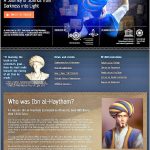THE LINGUISTIC CLUSTER THAT CONTAINS ETERNAL WORDS LIKE LIVING, ASSOCIATION, INSEPARABLE LOVE (ISHQ), NUMBER 10, CLAN, PEOPLE” AND MANY OTHERS MUST BE ONE OF THE GREATEST EVER INVENTED
The featured image is that of a very special nest for birds but its impact on human concepts is astonishing. It is a major post of critical etymology.
The perfection of the Stone Age linguist who invented the biliteral root is so complete some 50,000 years later or probably more we still use the pristine Stone Age root *‘Ŝ. The first letter of the biliteral is ‘ayin’, echoic of the sound of various wild animals borrowed and approximated for human phonology.
In etymology, we cannot but use the exact meanings of Stone Age roots. In Maltese, it is għoxx, the same as in Ancient, Modern and Dialectal Arabic. If one where to examine the image of this post, the connection should be obvious. Dialectal Syrian uses a double root linguistic structure called Dual Nuclei: *‘Ŝ *‘Ŝ, pronounced ashush. It is used to describe the private part.
The story may have been so: Oz, the linguist wizard of a small nation living in an oasis in south east Arabia, was with his girlfriend Li watching a bird’s nest. Oz was certain he has seen something very similar to the bird’s nest but he couldn’t remember where exactly. Suddenly, Li screams and opens her legs to see what bit her high up. Oz is concerned. He turns to help but it was a small black ant which was brushed away quickly. However, Oz couldn’t move his eyes away. Open mouthed with a wonderful realisation, he viewed it again and asked Li, “What do you call it?”
Being very shy, Li hides it away with her thighs and chides him, “Shshsh!” The brain storming was very brief. “Ush, it is, then,” he said, and looked at the nest and realised human beings are different from all other creatures because they can see abstract things animals don’t appear to see.
We can’t swear the story is true but it is possible. What we can swear to is that ‘Ush’ remains a popular name for “pussy” in Malta. Arab girls may have had a bit bigger size so the name for it is double, “ashush”.
Nor do we exaggerate when we claim the invention of this bilateral root was probably instrumental in separating humans from other animals forever. If you read on you’ll have an idea why.
Our ancestors were living in close proximity to bird nests, and they watched birds for years. They left two sounds that express the word ‘nest’ ʻš “ish”. Every time they noticed something new taking place in a nest they added a letter before ʻš or after it to express something that happens in a nest. The nest is a category, a container if you like, that has all words connected to ‘nest’.
So, what did our ancestors observe in nests?
They observed that a nest can have several birds. They added the letter ‘r’ to ʻš and produced ʻšr and that’s number ’10’. When they applied what they saw in nests to their own social structure, they found that they, too, were many so they used the same word ʻšr “ten” to describe themselves as ‘ashira’ “clan”. Clearly not many of our ancestors were around at this very early time.
What else did they observe?
The young being fed by their mums and dads, so they added to the root (ʻš) the sound for ‘a’ and produced aʻš. Today this word in Egypt means “bread”. In Egypt and elsewhere it means “living” because living requires that we eat. The very popular name Aisha, she was a daughter of Prophet Mohammad, is from the same root.
They also noticed that the birds were socialising in the nest so they invented another word ʻšra “socialising, amity, interaction, living together”.
They noticed birds grooming each other or birds nestling under the wings of dads and mums and they produced the word ʻšq “love”. There are two main words for love, ʻšq and *ḤB (asterisk denotes root). We discussed the origin of *ḤB in a previous post. ʻšq is produced here in International Phonetic Alphabet but it is written ‘ishq’. It has an entry in Wikipedia for the famous film (1997) and something about the word itself:
#Ishq is an Arabic word used in #Arabic as well as many other languages. (Arabic: عشق; in Somali: caashaq or (cishqi) in Persian: eshgh; in Urdu: ishq; in Dari: eshq; in Pashto: eshq; in Turkish: aşk and in Azerbaijani: eşq), means “love”. The word is derived from ‘ashiqah, a vine: the common belief is that when love takes its root in the heart of a lover, everything other than God is effaced. In Islam’s Sufi and mystic doctrine it is a concept which refers to “divine love” or “a creature’s love for its creator”; i.e. man’s love for God.
This is etymological drivel. What is being suggested is that ʻš comes from ‘ashiqah’. equivalent to saying mice come from elephants. You know better than Wikipedia now, but it is obvious how important this word is, thanks to birds that gave us the concept.
It is only when our ancestors saw what birds did that they noticed they were doing the same and applied the nest category ʻš to themselves.
The difference between Ishq and *ḤB is subtle. You can say “I love (*ḤB) bananas” but you can’t say “I ishq bananas”, otherwise you will be a banana yourself. The birds depended on each other, they needed each other, they’ll do anything to protect their offspring, and they’ll take all sorts of risks to bring food to their little ones. This is not just love. If parents abandon their young in nests the young will die. This is what “ishq” is all about. It’s a Romeo and Juliet love not Tim and Sally’s. It is extensial and emotional at the same time. It is inseparability at its human, but originally animal, best.
Why is ʻš “pussy”?
It’s an approximation but with some imagination it can look similar to the pubic hair of a woman. That’s where the children come from. ʻš is the name for this private part in Maltese. The Arabic is a double root: ʻšuʻš (Ashoush). Some say because it is bigger but that’s not true. Our admiration for girls is unquestionable because etymology is telling us at last the unimaginable sacrifices they took to make us, the human race.
Why is nʻš (n + ʻš) “coffin”? Because this how the very early coffins looked like – a pile of straw on sticks.
And ʻšb (ʻš + b) “grass”? Because nests are made of grass and little shrubs. Same goes for palm leaves stems.
And how is ‘nest’ connected to “dinner, dinner time (when it becomes dark), dim-sighted, nyctalopic (night-blinding), randomize, guess”?
Because our ancestors observed if birds come later than usual for any reason they may not find the nest easily. They become dim-sighted, they have to guess where the nest is, and they’ll fly at random hoping they may find themselves in the nest.
And ʻša (ʻš + a) “dinner, dinner time”? Because that’s when people ate, after dark but not much later.
10th is a fraction of ʻušr.
And the Goddess Ashtar?
We believe the word is a Nucleitic Compound – Ash which is ʻš exactly, and ‘tr’ “plenty, rich”.
She was the goddess of plenty and fertility but it is clear to us the original meaning of the goddess was bringer of plenty of food which is an aspect of good life.
And that’s about it.
Thanks to the girls for not screaming.
Our very, very rough guess of when the root was invented? Probably 50,000 years ago and most probably in a very ancient colony in Central Arabia.
But wait a minute, why did we claim that had our ancestors not been able to see beyond the nest we still living in the Stone Age? It’s no claim. The cluster *ʻš/*šʻ gave us two expressible human concepts: šʻr > ‘shuoor’ “feeling”, and bšʻ “ugly”.

Image credit: vogelsnest-22 hotel-r_net
Last modified: December 30, 2022



